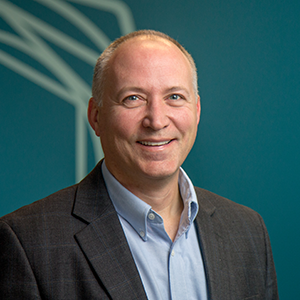Q: Despite all the money spent on security, many organizations still have a very hard time detecting breaches in a timely fashion. What is it they are failing to do or are not doing enough of?
Paul Martini: I think organizations are still focusing heavily on preventive technology, building higher walls or better mousetraps, so that when a new technology is introduced everyone jumps on it. But as we all know by now, nothing is completely foolproof, which is why we hear of these massive data losses after a breach.
Today, after a major data breach occurs, we are no longer surprised to discover that gigabytes and even terabytes of data have been stolen. Some of these breaches have gone on for months without discovery, even years, which is hard to believe. This window between infection and detection, referred to as "dwell time" is clearly the most critical factor when it comes to detecting breaches. It exists primarily because organizations are putting too much emphasis on one area, prevention, and being diverted from a more balanced security approach.
As a first step to a more robust defense against data loss, organizations need to accept the fact that they will get infected. It's just not realistic to assume otherwise. And when an organization does get compromised, the faster they can detect the active infection and shorten dwell time, the greater their chances are to minimize the data loss.
It will never be zero, which is why focusing on your data and proactively monitoring all your traffic is so important. Behavioral analytics technology that monitors and analyzes your outbound data looking for anomalies can narrow this security gap by shortening dwell time, giving companies a significant advantage.
Imagine the difference between losing a few hundred records and losing 10 million. The more progressive organizations are pursuing technology that can find active infections on the network, identify where they are located, determine what happened, etc. And the even more progressive ones are taking it a step further by focusing on the data itself proactively monitoring it, knowing where it's moving and how much data is being transferred.
Q: iboss has positioned itself as one of the few companies that can help enterprise detect and stop breaches before loss occurs. What is it about your company's node-based cybersecurity architecture that enables this capability?
Martini: iboss differentiates itself from other security vendors in a number of ways, beginning with our node-based architecture. Standard cloud security is based on a monolithic architecture, where data from multiple organizations is shared in the cloud. We recognized disadvantages with this approach because a breach affecting one customer could migrate to other organizations' data in the cloud, creating vulnerabilities we thought could be avoided with a node-based design.
In a node-based architecture, nodes are isolated by OS boundaries. Each node is self-contained with its own OS, memory, processing; everything it needs to function without having to mix an organization's data with any other's. Each organization gets its own node collection, so that even if something happens to one customer, others aren't impacted.
Nodes deliver all iboss features and can exist anywhere, on-premises or in the iboss cloud, so customers can have any configuration they require. For instance, you could keep your data within your own datacenter, securing users on-premises when they are at corporate headquarters and then via the cloud when they are remote or roaming, without having to proxy data back to corporate or deploy hardware.
The second differentiator is iboss advanced threat defense that detects data breaches and reduces data loss with behavioral DLP. This technology leverages our visibility across the full inbound and outbound Web stream, continuously monitoring and analyzing against a network baseline looking for anomalies. It is watching the data to see where it moves and how much data is moving, looking for suspicious transfers. Once a problem is detected, the data transfer is automatically stopped, giving you time to remediate the problem.
We also have a cyber threat score feature that analyzes the threat intelligence gathered in our incident response center. [It] applies the same algorithms used by the world's biggest banks to determine credit risk, and issues a threat score. This speeds response time because security analysts know which incidents to pursue first. These features combine to give organizations the tools they need to find breaches faster, minimize dwell time and thus reduce data loss.
Q: What do you want attendees at Black Hat Europe 2016 to take away from your presence at the show?
Martini: We want them to take away a couple of things. First, we'd like them to leave with an understanding of iboss node-based architecture and the advantages it offers. How its flexibility can give even the most cloud-averse organizations, cloud security on their terms. It's also a very fluid way for organizations to transition to the cloud because nodes can exist anywhere and can be created or destroyed instantly. You can have nodes on-premises and if you want to transition to cloud nodes, it's literally just a click of a button, because nodes are synchronized across your enterprise.
We also hope they will learn how committed we are to our customers and to advancing cybersecurity technology. It's not an accident that we have over a 98% renewal rate.
Our customers are loyal because we continue to maintain an aggressive development schedule in our efforts to keep their organizations secure. It's become almost cliché to say that cybersecurity vendors fight to stay ahead of criminal hackers, but it's true. We realize we are in a cyberwar with a very dedicated and sophisticated adversary and we don't take our commitment to security lightly.






